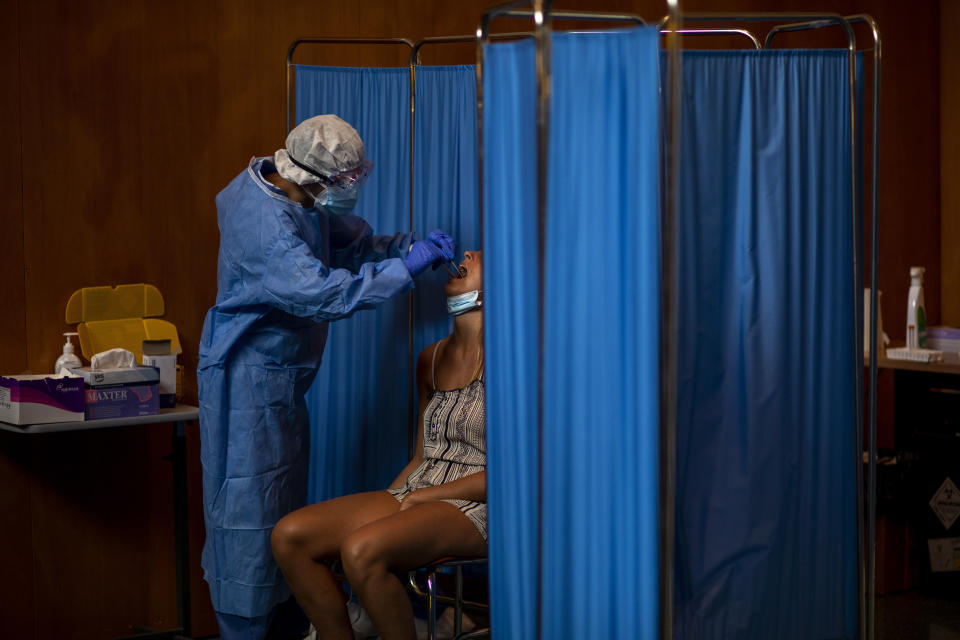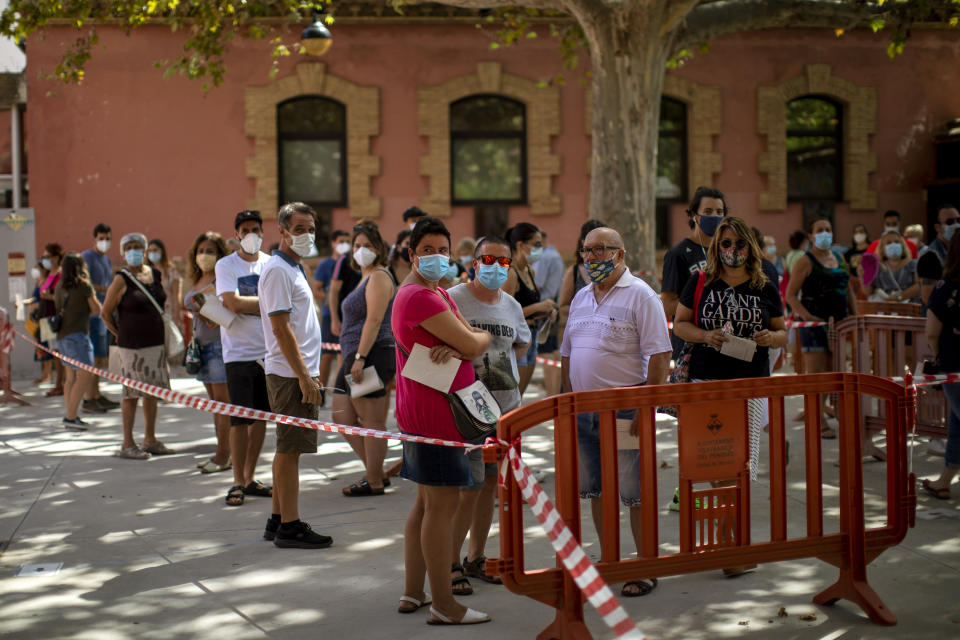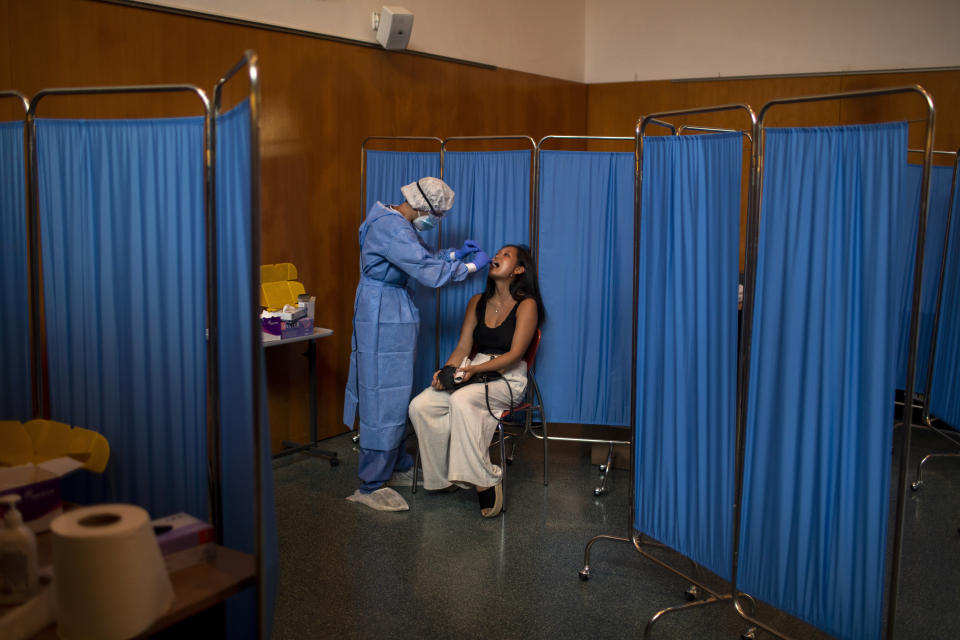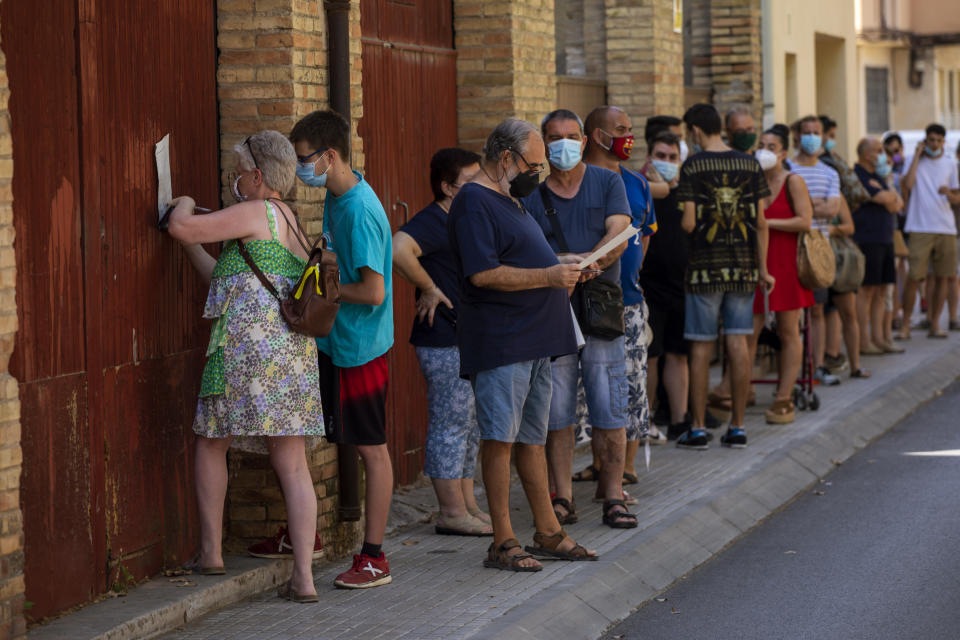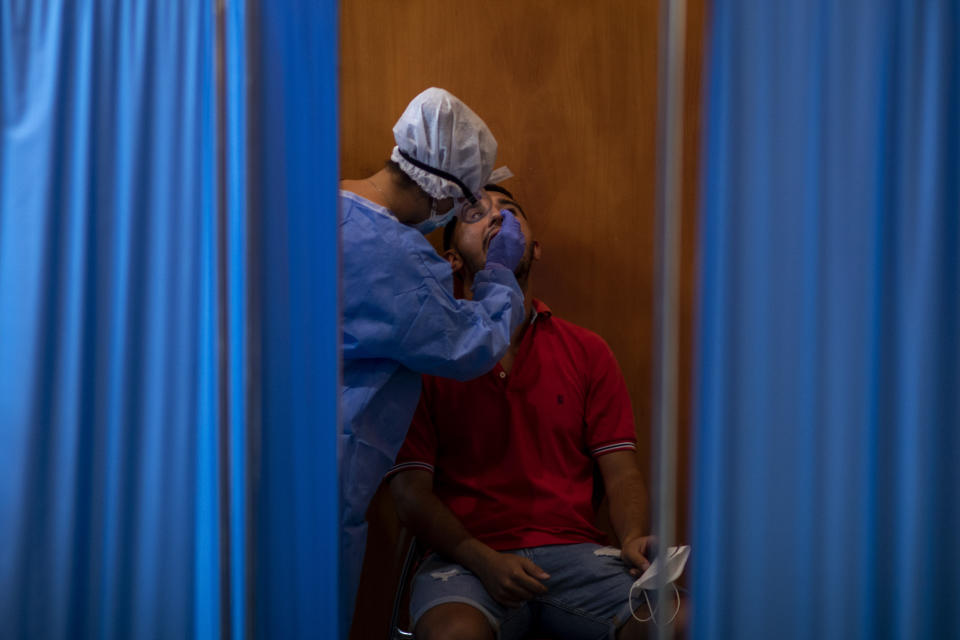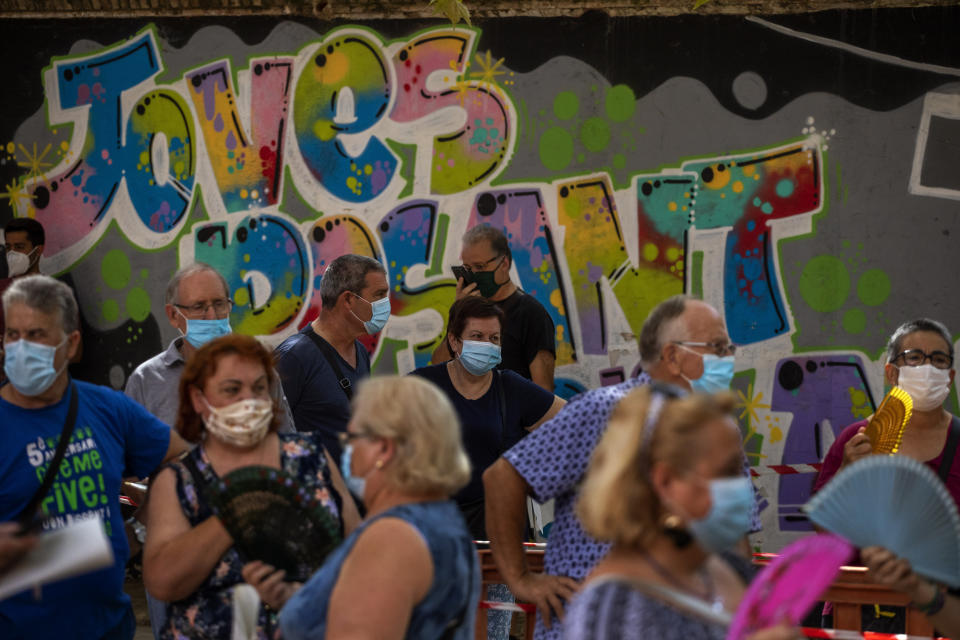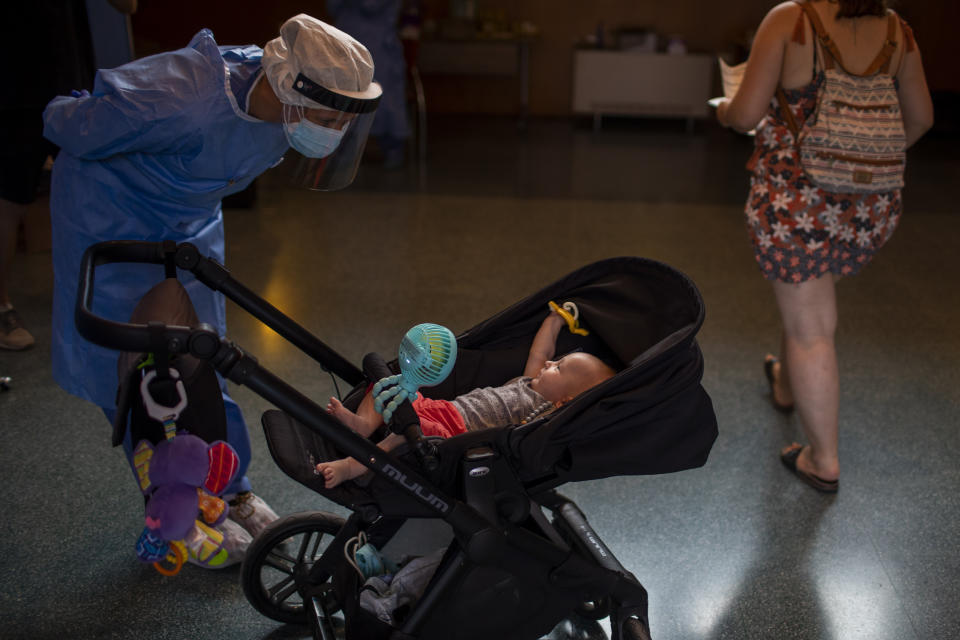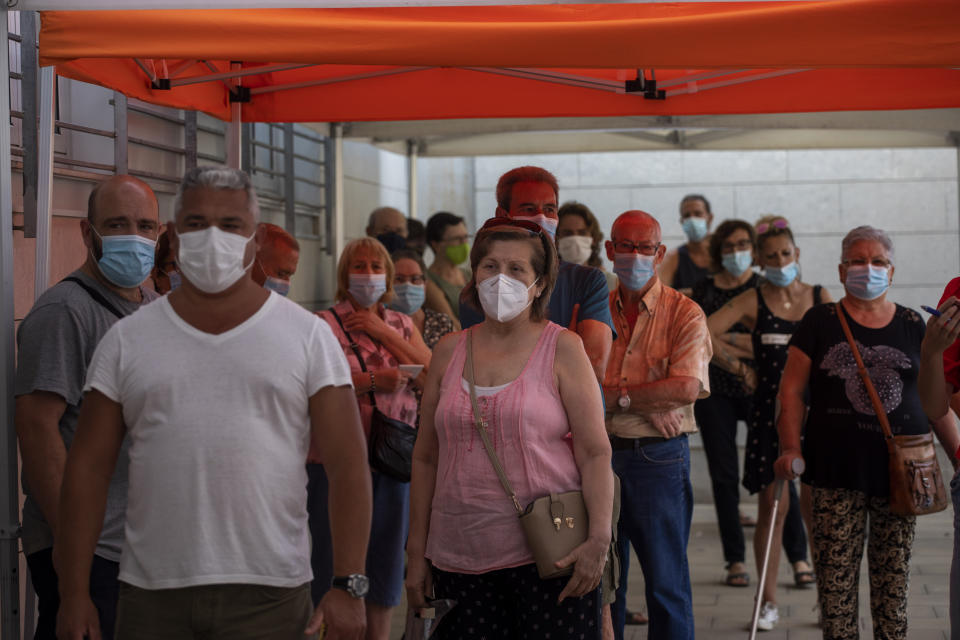Experts warn Spain is losing the 2nd round in virus fight
BARCELONA, Spain (AP) — Not two months after battling back the coronavirus, Spain’s hospitals have started seeing patients who are struggling to breathe returning to their wards.
The deployment of a military emergency brigade to set up a field hospital in the northeastern city of Zaragoza this week is a grim reminder that Spain is far from claiming victory over the virus that overwhelmed the European country in March and April.
Authorities described the field hospital as a precaution, but no one has forgotten the earlier scenes of Spanish hospitals filled to capacity and the devastating period when the country's COVID-19 death toll grew by over 900 a day.
While an enhanced testing program is revealing that a majority of the newly infected are asymptomatic and younger, making them less likely to need medical treatment, concern is increasing as hospitals admit more patients again.
The Spanish government’s top virus expert, Fernando Simón, said Thursday that the 3,500 hospital beds occupied nationally by coronavirus patients represented just 3% of the total capacity.
“I would not say that what we are seeing now is similar to what we experienced in March and April. It is not in any way comparable,” Simón said. “But it is true that transmission is increasing in every region, and we can’t drop our guard. We are still facing an important risk.”
Experts are working to determine why Spain is struggling more than other countries after western Europe had achieved a degree of control over the virus.
But one thing is clear: The size of the second wave has depended on the response to the first one.
“The data don't lie,” Rafael Bengoa, the former health chief of Spain’s Basque Country region and an international consultant on public health, told The Associated Press.
“The numbers are saying that where we had good local epidemiological tracking, like (in the rural northwest), things have gone well,” Bengoa said. “But in other parts of the country where obviously we did not have the sufficient local capacity to deal with outbreaks, we have community transmission again, and once you community transmission, things get out of hand.”
Bengoa is one of 20 Spanish epidemiologists and public health experts who recently called in a letter published in the medical journal The Lancet for an independent investigation of Spain’s COVID-19 response to identify the weaknesses that made the country among the worst affected by the pandemic in Europe despite its robust universal health care system.
Spaniards largely comply with mandatory face mask rules. The Spanish Health Ministry also embarked on one of the world’s largest epidemiological surveys. Randomly testing over 60,000 people, it found the virus prevalence to be 5%, showing that the population was far from a “herd immunity.”
However, Spain, with a population of 47 million, leads Europe with 44,400 new confirmed cases in the past 14 days, compared with just 4,700 new cases reported by Italy, which has 60 million inhabitants and was the first European country to be rocked by the coronavirus.
Spain is still in good shape compared with many countries in the Americas, where the virus seems to be spreading unchecked in the United States, Mexico and several South American countries.
But hospitalizations with COVID-19 have quintupled in Spain since early July, when cases were down to a trickle after a nationwide lockdown stopped a first wave of the virus that had pushed the health care system to breaking point.
The Health Ministry said Tuesday that 805 people were hospitalized with the virus in the previous seven days. Half of the 64 virus-related deaths reported that week were from Aragón, the region surrounding Zaragoza.
“There is no one single factor in such a pandemic,” said Manuel Franco, a professor of epidemiology at Johns Hopkins University and Spain’s University of Alcalá who also signed The Lancet letter.
Franco cited economic inequalities in Spain that have exposed poorer communities, especially fruit pickers, to greater harm, understaffed epidemiological surveillance services, and a large tourism industry as among the country's vulnerabilities. Combined with other factors, they could have formed a lethal cocktail.
Bengoa believes that social customs prevalent in Mediterranean cultures, which emphasize physical contact and smaller personal space, have worked against Spain.
“Family gatherings are dangerous in Spain. We are being anti-Spanish in social gatherings if Spaniards don’t kiss, hug and touch one another," Bengoa said, while adding that Spanish and Italian families live in larger, more multi-generational groups than in northern European countries, making contagion inside households more likely.
Some authorities seem to agree. Spain’s Canary Islands government has issued a public awareness spot that shows a family gathering for grandfather’s birthday, with people taking off masks and embracing, only to end with grandfather in a hospital bed.
Italy, the first European country ravaged by the virus, has extended its state of emergency through Oct. 15, and the government has used that authority to pass a series of decrees, ordinances and measures to protect public health.
The Spanish government, in contrast, ceded to pressure from some regions to end its three-month state of emergency in June.
Spain’s regions since have complained that the government has not given them the special authority to confine people to their homes that it used to good effect under the state of emergency. That has led to regions having to recommend that people stay at home — instead of ordering them to do so — and lower compliance.
Yet it seems that adjusting to the “new normal” of co-existing with the virus has been uneven across Spain’s regions.
The regional governments of Madrid and Barcelona appear to have underestimated the need to contract more contact tracers to keep tabs on cases.
Madrid, whose conservative leaders rarely shy away from a political scuffle with the nation’s left-wing government, has called for university volunteers to act as tracers and hired a private hospital to help do tracing.
Madrid’s regional health chief Enrique Ruiz told Spanish health news website ConSalud.es on Wednesday that the the capital has doubled its hospitalizations each week for the past month, reaching 4,600 last week.
“Our hospitals can handle the number of patients in the wards and critical care units, but that does not mean that we aren't closely watching the situation,” Ruiz said.
Catalonia’s separatist-led administration, likewise, moved too slowly. Catalonia’s new public health director, Josep Argimon, said Tuesday that the situation is “stabilized” after his office appears to have improved the response by carrying out pool testing to control clusters.
Miquel Porta, a professor of epidemiology at Barcelona’s Hospital del Mar who also signed The Lancet letter, said “it is mind-blowing that politicians don’t take action” before the expected new wave returned.
“You need people in the field doing shoe leather work to search for contacts,” Porta said. “It boils down to very simple things, and some regional governments are not doing what they said they would.”
___
AP writer Nicole Winfield contributed to this report from Rome.
___
Follow AP coverage of the virus outbreak at https://apnews.com/VirusOutbreak and https://apnews.com/UnderstandingtheOutbreak

 Yahoo News
Yahoo News 